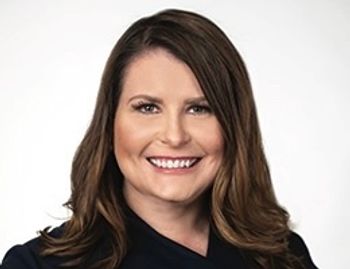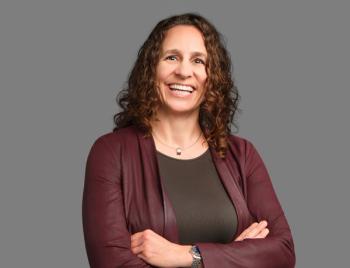
Life and debt: TailorMed aims to remove financial barriers for patients
Ian Manners, chief strategy officer of TailorMed, talked with us about the company’s work with health systems and lessons for hospitals in helping patients manage big medical bills.
When a patient is diagnosed with a serious illness, they think about battling the disease and getting healthy.
And then, many patients have another thought just as ominous as the disease itself: How are we going to afford it?
Health systems need to consider the patient’s financial situation early in the healthcare journey, said Ian Manners, chief strategy officer for TailorMed, a healthcare company that offers software solutions to identify patients who may struggle with hefty medical bills. TailorMed’s platform estimates patients’ out-of-pocket costs and connects them to resources that can help cover the costs.
“It's important to address a common misconception, which is that the only people who are at risk of an unaffordable care episode are those who maybe don't have insurance,” Manners says. “We found that that's absolutely not the case.”
“Certainly it is true that patients who aren't able to access insurance, who don't have coverage currently are going to have significant challenges accessing care,” he said. “But even for those patients who have, you know, a good insurance plan, whether it's commercial insurance or a form of Medicare, the out-of-pocket costs associated with getting the right care can be significant.”
Manners spoke with Chief Healthcare Executive about TailorMed, the need for health systems to do better at connecting patients with financial resources, and improving the patient experience. (See excerpts of our conversation with Ian Manners in this video. The story continues below the video.)
Helping patients find resources
Manners joined TailorMed a year ago. He had previously co-founded Vivor, a competitor in financial assistance technology. Last November, TailorMed announced it was acquiring Vivor.
TailorMed, with offices in New York and Tel Aviv, provides software solutions to hospitals, health systems and pharmacies to help patients find help in making substantial bills more manageable. TailorMed works with some sizable hospital systems, including Advocate Aurora Health, Providence Health and Yale New Haven Health.
The company software can help match patients with government aid, nonprofit assistance, pharmacy rebates or assistance with housing and transportation.
Nearly one in five households is struggling with medical debt. Patients with chronic diseases that have costly, ongoing treatments, or difficult diseases such as cancer, can end up with enormous expenses.
“In those cases, the cost can quickly pile up and you can end up with a significant bill at the end, even after insurance pays their share,” Manners says.
“So what we're doing at TailorMed is trying to enable a really proactive approach that providers and pharmacies can take, first of all to identify those patients who can have a high out-of-pocket cost,” he adds. “And we do that by analyzing their insurance details, query the details of their plan and comparing it against the cost of their treatments.
“And then we're able to deliver that information to the folks who can actually do something with it, someone at the provider or the pharmacy is interacting with the patient and help them to really to get ahead of it, you know, to not necessarily end up with a bill at the end that could turn into medical debt,” Manners says.
- Read more: The future of healthcare ‘is about the consumer’
Debt and outcomes
Medical bills can do more than wreck patients’ finances. Patients who struggle with paying their medical bills often end up at risk for further health complications.
Researchers suggested the cycle of medical debt contributing to declining health, according to a
“Our findings suggest that incurring medical debt leaves many unable to pay for utilities, and worsens housing and food security, key SDOH (social determinants of health) associated with adverse health outcomes, including frailty at birth,” the researchers wrote. “Hence, unaffordable medical bills may constitute an SDOH in their own right and contribute to a downward spiral of ill-health and financial precarity.”
Noting such research, Manners points to the importance of helping patients find all the financial resources possible from a healthcare perspective. Patients will have better outcomes if they can start medications quickly, and don’t have to debate between paying for a prescription and paying other bills, Manners says.
“What we're really laser focused on is making sure that the patient is able to afford what their out of pocket is, at the end of the day, that's going to help them to get the right treatment, to stay on it, and therefore, to see the best outcomes,” he says.
And that can help providers improve
“Affordability often is a barrier to patients getting the right care,” Manners says.
By being more proactive, health systems can ensure that patients get access to financial assistance, and that aid doesn’t go to those savvy enough to find available programs or resources.
“For resources that exist, those who are best able to navigate a system or most savvy with technology are usually the ones who end up getting it anyway,” Manners says. “And for both pharmacies and providers, we find that the more proactive approach with technology takes that barrier away, makes sure that you don't just happen to be savvy or maybe get lucky and talk to the right person. You're able to offer these resources to everyone.”
Manners touts TailorMed’s technology as a way to help understaffed health systems enable patients to get the financial help they need.
“Organizations are stretched for resources and for time,” he says. “The technology plays a big, big role in reducing the manual effort that's required. And that allows us to kind of go after everyone, especially focusing on those at highest risk or unaffordable care.”
In discussions with health systems, Manners says it’s in their interests to do more to understand patients’ ability to pay and connect them to available resources. He said TailorMed worked with one health system to help them double the financial assistance to patients over the past couple years.
In addition to improving the patient experience, those efforts can save money and manpower, by spending less on trying to collect on bills and debt that may be written off, Manners says.
While the company is working with some larger health systems, TailorMed also partners with smaller providers.
“The problem of affordability exists in a whole range of settings,” he says. “And you know, our goal is to be everywhere that those prescriptions are written and dispensed. And that includes the smallest healthcare settings.”
‘Proactive approach’
Smarter healthcare organizations are working with patients very early to help them get a good grasp of the costs they are facing, Manners says.
Proactive organizations are “when it comes to affordability, kind of baking in a financial navigation experience, everything that patient is going to go through, at the beginning of that treatment journey,” Manners says.
Health systems and hospitals that are doing it right are connecting patients early with someone who can lay out the costs, and what the organization can do to help. “I would sum that up as is the combination of patient experience, focus, and proactive approach,” Manners says.
While patients are worried about the costs, they’re also primarily focused on their health. Health systems shouldn’t take for granted the patients easily understand the costs to come.
Without early engagement, patients could end up skipping treatments or medications, potentially setting themselves up for dire outcomes. Hospitals can also be setting themselves up for more headaches in collecting payments, when they could have helped patients find resources, Manners says.
“A lot of times patients can get the best possible clinical care at a certain institution,” Manners says. “But you know, they might not necessarily be experiencing the best financial care or other aspects of the patient experience. I think it's really important for providers to see it as something that is holistic, they should be treating the whole patient and every part of someone's life is impacted. That includes finances.”






















































































